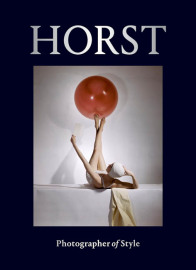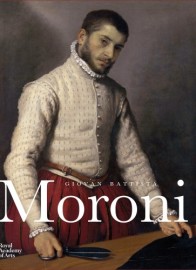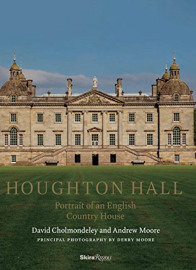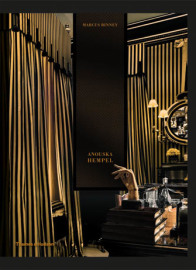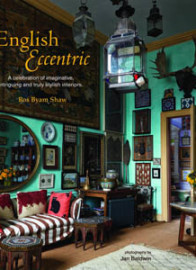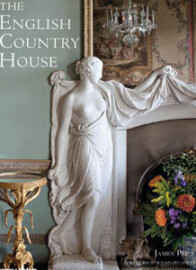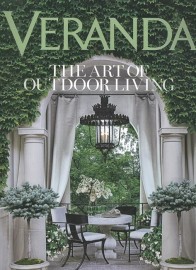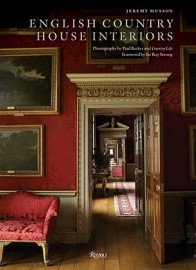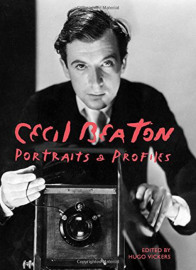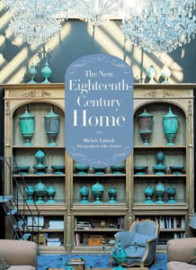Can the way you design or decorate your home be life changing? Can interior design make you a happier, healthier, more productive person? As an interior designer I would say that the answer is… a qualified yes. I mean it can’t perform miracles like fix your marriage or prevent an illness. But it can facilitate your life and prevent your home from dragging you down. Life will always present challenges, but your home shouldn’t be one of them. That’s the whole point of interior design, to improve our use and enjoyment of spaces. Most people don’t realise that interior design is so much more than just aesthetics. It’s also about ensuring that spaces work for us and make our lives easier, safer as well as more pleasant. But the truth is that design can be so much more potent than that. It really can be harnessed to affect our emotions one way or the other. Perhaps more surprisingly, it can also offer a powerful psychological tool for individual self promotion or even state propaganda. Quite simply, the way you decorate your interior can broadcast carefully calibrated messages to the world about how we – either as individuals, businesses, governments or even religions – want to be perceived by others. And it can get results.
Long before we get to plump the cushions, we interior designers have to avail ourselves of skills as diverse as engineering, construction, art and perhaps surprisingly – psychology. We don’t have to be a Freud – who was incidentally very interested in the psychology of environments – but we do first need to understand the client and their particular needs. We then have to reflect those needs both spatially and decoratively, in a way that can be understood by the client and perhaps also by the client’s own community, if prestige, culture and sophistication is the name of the game. Most people of course just want a comfortable, well-functioning home that relaxes and lifts their spirits after a long stressful day at work.
Design for Happiness?
What are the things that heal us when we’re stressed and tired? Well I think the most powerful of healers – that we often take for granted – are love, exercise and a connection with nature. But when you consider that as Northern Europeans we end up spending 90% of our life on Earth indoors, we had better make sure that our spaces work for us emotionally too. Historically many civilisations have their own versions of environmental psychology driven by the age-old need to produce harmonising surroundings for people to thrive in. Ancient Greece – that is the root of Western civilisation – for example, designed structures based on the human form and proportion, and that is undoubtedly one of the reasons for the enduring power of classicism.
The far more ancient Vastu Shastra and Feng Shui – that are 5,000 and 4,000 years old respectively – that combine both spiritual and pragmatic principles in an effort to harmonise humans with their environment, are as popular now as they ever were.
Similarly Wabi Sabi – a newcomer relatively speaking, in the Asian world of aesthetics, being only about 500 years old – developed out of Taoist and the Zen principles, to become the quintessential Japanese aesthetic, and is now rapidly gaining popularity around the world. In contrast to classical Western civilisation that focused on grandeur, perfection and symmetry, Wabi Sabi is an awareness of the transience of all things, finding beauty in simplicity and imperfection and rejecting all that is superfluous and artificial. Wabi Sabi philosophy has inspired many key features of Japanese culture including Haiku, No theatre, the tea ceremony, flower arranging and landscape design. This humble and all-embracing worldview is being embraced by many Western artists, craftsmen and interior designers including the internationally influential Axel Vervoordt. The life changing promise of Wabi Sabi design is not only harmonious interior design but psychological liberation and earthly contentment.
Along with these are a whole raft of pseudoscience therapies, like chromotherapy for example, that also make claim to life changing experiences, including psychological and even spiritual benefits. For years companies like McDonalds have used strong vibrant colours like orange, which are thought to energise you into eating more Big Macs and loitering less. Recent studies on the emasculating impact of the colour pink – which according to some is kryptonite to your masculinity – has led some prisons and schools to use the colour to reduce aggression. The University of Iowa stadium has even taken to painting the entire visiting locker rooms – down to the urinals – in a lurid bubble gum pink, as a canny psychological tool. The results appear to be mixed! But does blue really make you more creative? Does red make you more vigilant or sexy? Does green calm you down? Colour is of course a complicated matter as there are all sorts of cultural and personal associations involved. But you don’t need to buy into all of that lock-stock-and-barrel however, as most of the principles of these belief systems are rooted in good old common sense – hence their appeal. You don’t need to be a card carrying New Ager to know that clutter can be dispiriting, and painting your walls black can encourage existential angst – OK if your a teenage goth I suppose, but not so good if you’re middle-aged and on anti-depressants.
The inherent good sense of some of these therapy-based aesthetics is admirably exemplified by the Scandinavians, who have independently come up with their own distinctive regional take on the life changing qualities of interior design. And as they usually rank at the top of OECDs surveys on the happiest people – even with weather every bit as dreary as in Old Blighty – they must be doing something right. There are doubtless many reasons accounting for this regional contentment, including progressive policies on free health care and education, and a Calvinist mind-set that generally works against ostentation and showing off. But at the heart of the ever-popular Scandinavian Style is an aesthetic that is founded on a shared local philosophy and worldview. In Sweden they call it ‘lagom’ – meaning something akin to ‘everything in moderation’. In Denmark their well-known contentment is often attributed to their life changing concept of ‘hygge’ – an ethereal concept loosely conveying a kind of convivial coziness. How astonishing that the Scandinavians even have modern day ‘national styles’ that many around the world aspire to emulate. Not much chance of that happening over here, unless you consider ‘eclectic’ a style!
Design for Power
But of course apart from making you happier, interior design can also do wonders to your prestige. The extraordinary power that can be leveraged from both interior design and architecture was not lost on even the most ancient of civilisations like the Incas or Ancient Egyptians, Greeks or Romans. Sometimes these messages can seem a little confusing, when you compare the simplicity of Christ the carpenter for example, with the material magnificence of the Vatican. But then again the sad reality is that for most impressionable humans, displays of power and wealth are probably more compelling than displays of humility and modesty. When Louis XIV or Peter the Great drained marshes and constructed palaces and cities in the most inhospitable of places, at the cost of many lives and shed loads of money, they were trying to communicate a kind of propaganda concerning power, prestige and national identity. Similarly the construction of country houses in England, filled with the best art and artefacts that money can buy, and gardens laid out in the latest styles, were all carefully articulated statements replete with symbols, that would have been immediately recognisable to the contemporary visitor.
Sir Robert Walpole’s exquisite masterpiece of Houghton Hall in Norfolk for example is an essay in sophisticated learning, grandeur and Whig politics. This was a power house of a building built largely to house one of Europe’s best art collections, and so in a sense it was built inside out. It’s interior designer William Kent was not only its interior architect but also its decorator, having painted many of its ceilings and grisaille murals himself. Walpole had come from humble origins to be the first British Prime Minister. He needed his house to convey the message that he and his family had arrived socially. He achieved this firstly with the careful choice of the new Palladian architecture, that symbolised the new peaceful and prosperous Augustan Age, as this era characterised itself. He then commissioned the most forward looking of interiors, with one of the grandest halls in Europe, over which he imperially presides in the form of stone bust attired in a Roman toga – just in case you hadn’t quite picked up the connection being made with the power and greatness of Rome.
Stone Hall at Houghton, Norfolk
Design for Money and Fame
I was pondering the life changing qualities of interior design once again recently when I came across the following deeply insightful comment by Cecil Beaton, made in a diary entry in October 1925: “One can’t get on at all if one doesn’t have a little glamour about one’s home.” So Beaton was certainly convinced that interior design has the ability to improve one’s prospects. Of course he had self promotion in mind – of which he was a particularly skilled past master.
Beaton felt he needed to convey certain clear messages about himself to the world concerning his identity, that he believed facilitated his social and professional success. Ashcombe, his first home was leased when he was only 26 years old, and the messages conveyed were those of youthful rebelliousness, artful decadence and most importantly, success. Reddish his second country home once again radiated success of course with its expensive furnishings and elegance, but now the decadence and rebelliousness of his youth were quite emphatically long gone. He was of course older and had lost many dear friends in the war, that he had experienced as a war photographer.
Reddish is a nostalgic paean to the elegance of the Edwardian era, and as an award winning costume and set designer for blockbusting films like My Fair Lady and Gigi, Beaton had plenty of empathy and skills in this direction. An elegant portrait of his mother in Edwardian dress seems in fact to be both the starting point and inspiration for his entire scheme for Reddish. And if a family portrait and a complementary interior decoration heaving with cut flowers seems a bit like a theatre set, then that’s because that’s exactly what it was. Even his scented ‘winter garden’ is a reconstruction of his set for Mrs Higgins conservatory in my Fair Lady. So in the environment of the fairly immobile, class-ridden society of post war Britain, the unmistakable messages at Reddish were of a man with roots; a solid member of the establishment; a man of taste and a gentleman who just happened to be engaged in photography.
Of course the reality of Beaton’s social success was indeed impressive – if somewhat disguised -when you consider that he was the son of a timber merchant and grandson of a blacksmith. Lionised by both Hollywood and British royalty he helped transform the role of photographers in Britain. A remarkable feat when you consider that before Beaton, photographers in Britain would have rather unceremoniously entered and exited through the ‘tradesman’s entrance’.
It is indeed a testament to Beaton’s remarkable powers of energy and creativity, that in the early 1960s – at around the age of 60 – he redesigned his London home in South Kensington in a radically modern style. There isn’t here even a whisper of chintz. Instead it’s all clean lines, bold colours and geometric patterns. A Picasso vase perilously overladen with flowers sits nonchalantly on the table, and all around are golden Buddhas, abstract paintings, Giacometti furniture and tribal art. Beaton is effortlessly expressing his urbane, worldly sophistication. With his country and London residences decorated in the two very different styles of the times, it is likely that Beaton was leveraging interior design to make a rather sophisticated statement about himself.
Whereas Reddish may be a successful attempt to root himself into the deep soil of the British establishment, in London his decoration declares that he is not only the man of the moment but also the man of tomorrow as well. Not only at the zeitgeist of his times, but also completely at ease with the avant-garde. And as always all of this is accompanied by the silent scream of success.
So whether it’s self promotion, state or church propaganda, or just a happy well functioning home, interior design can be a powerfully life changing tool – but of course it can go either way. It can only be a good thing therefore, that in recent years the new discipline of Interior Design Psychology, has emerged as a scientific response to our atavistic need to harmonise with our environments. And it couldn’t be happening at a better time. Modernism and its successors have left us with a legacy of extremely alienating forms of architecture and interiors that are creating the conditions of prolonged stress in our lives. It’s easy to deride the old environmental psychologies of Feng Shui or Greek and Roman classicism as superstitious hokum or just outdated. But the inescapable fact is that human needs and scale were central to their concerns. Our disconnection with our animal selves and needs, and the architects’ and interior designers’ preoccupation with egocentric concerns like glamour, the pursuit of innovation for innovations sake, as well as the value our society places on indicators like GDP instead of ‘happiness’, will no doubt create conditions of increasing stress and unhappiness in our lives. If we replaced architects and interior designers with zoologists and got them to design an ideal habitat for human animals, would they have come up the Trellick Tower or the Shard? I doubt it. What we need is a bit of ‘hygge’ in our lives.





















